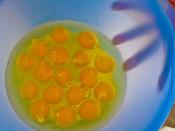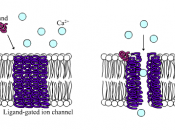Neuron transmission throughout the body is essential in ensuring the stability of a human being. When neurons are not flowing properly there is an increased risk of disease and instability within the body. Ions within neurons also tend to move against membrane potentials, the difference between inside and outside electrical charges of a cell. When Na+ and K+ ions move through respective channels, the balance of membrane potentials is dramatically changed as well as the effect these ions have on the charge of inside and outside of the cell.
Neurons are depolarized when Na+ ion channels open because of the change in charges across the ionic membrane. When Na+ ions move from a low concentration outside of the cell, to a higher concentration inside of the cell, the result is a decreased membrane potential. The inside of the cell becomes more positively charged as ions are excited due to the change in resting membrane potential, -60 mV, of the cell.
The ions remain depolarized until sodium/ potassium pumps re-polarize the cell by allowing K+ ions to reenter with the help of ATP synthase.
Neurons are inhibited when K+ channels open almost in the same way Na+ ions react. With a high concentration of K+ inside the cell than outside, potassium leaves the cell when channels open. Differing from Na+ ions, K+ ions leaving the cell creates a higher negative charge inside of the cell. The membrane potential will begin to get increasingly negative as hyperpolarization occurs. The cell is unstable until again active transport occurs and allows K+ to begin to repolarize the inside of the cell. ATP again provides the energy required to transport such ions into the cell.
Sodium and Potassium pumps are the key to ensuring a balance within a neuron. Without a proper balance, neuro...


